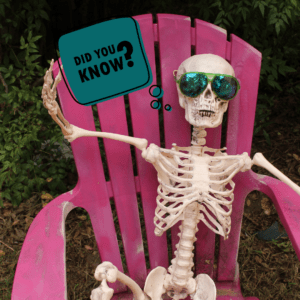Pain In The Neck? It Could Be Your Bed!
If you’re experiencing back and neck pain, the culprit may be your bedroom 🛏 or pillow.
If your mornings start with pain or you are tossing, turning, and waking up at night, the chances are that it’s what you’re sleeping on or the position you are in that’s causing the problem. A poor-quality mattress and pillow can result in feeling constantly fatigued and like you just can’t function even though you’ve just slept eight hours 😴.
Here are the main reasons your bed could be a literal pain in your neck and what you should look for in a good mattress and pillow.
How Your Bed Can Cause Pain
Generally, the biggest reason a mattress will cause you pain is if it’s too soft or too hard (more on this later). It could also be an issue if your mattress is more than eight years old ⏳ or if it’s noticeably saggy or uneven.
If there is visible sagging in the middle of your mattress, there is a good chance that your mattress is too old, and it is time for a change.
If your spine isn’t in a neutral position while you sleep, you will spend all night trying to get comfortable 🙈leading to tossing and turning.
We recommend changing your mattress every seven to eight years ⌚ as they lose their support over time. Also, your body weight ⚖, sleeping habits 💤 , and bone density 🦴 change over time, so your mattress may need to change.
What To Look For In A Mattress
If joint pain and stiffness are your main problems, you may benefit from a medium firmness mattress. If a mattress is too firm the curves in the spine can flatten, reducing the body’s natural cushioning and suspension system. If you find that your lower back is stiff and tight in the morning, it is quite possible that your mattress is too soft. The spine isn’t supported and can end up being in awkward positions for too long 😲.
The best mattress you can opt for, although sometimes pricey, is an orthopaedic mattress 🙌. The more pocket springs per area, usually the better quality it is. An orthopaedic mattress is designed to give your body support no matter what position you’re sleeping in 😌. This type of mattress is not prone to sagging and is likely to last many years. A good quality firmer memory foam mattress can be an alternative. However, they can sag in the shape of our bodies and some people find them too hot at night which can lead to sweating. Some companies will let you trial a mattress for a month (as it can take weeks to get used to a new bed) and be sure to work with a company that will collect your old one and dispose of it ethically.
Sleeping Positions
Ideally, we should sleep on our side, as this prevents us from flattening our spinal curves (like when we back sleep) and doesn’t lead to turning our head to one side all night (when we front sleeping). Sleeping with a pillow between our knees can help make side sleeping more comfortable and also help prevent lower back pain.
What To Look For In A Pillow
This height of our pillow is often more important than the material. Too high or too low and the neck can be tipped at an angle all night that leads to neck pain. Measure the thickness of the pillow based on the distance from your shoulder to your ear. A firmer memory pillow, high loft latex foam pillow or full shredded foam pillow can be good for sleeping on your side. Ask someone to check that your head is neutral (no tipping left or right) when you lie on it, and this will help you find the correct height. If it is a little too low, using folded towel underneath can make all the difference.
Can I Get More Help?
We are always happy to give you advice about the best mattress and pillow for you 🗣. Just bring in your pillow and we will see if they are a good fit + we can help correct any issues caused by bad sleeping positions.
Contact us to chat more about your back and neck pain as well as buying the right bed for your needs.





